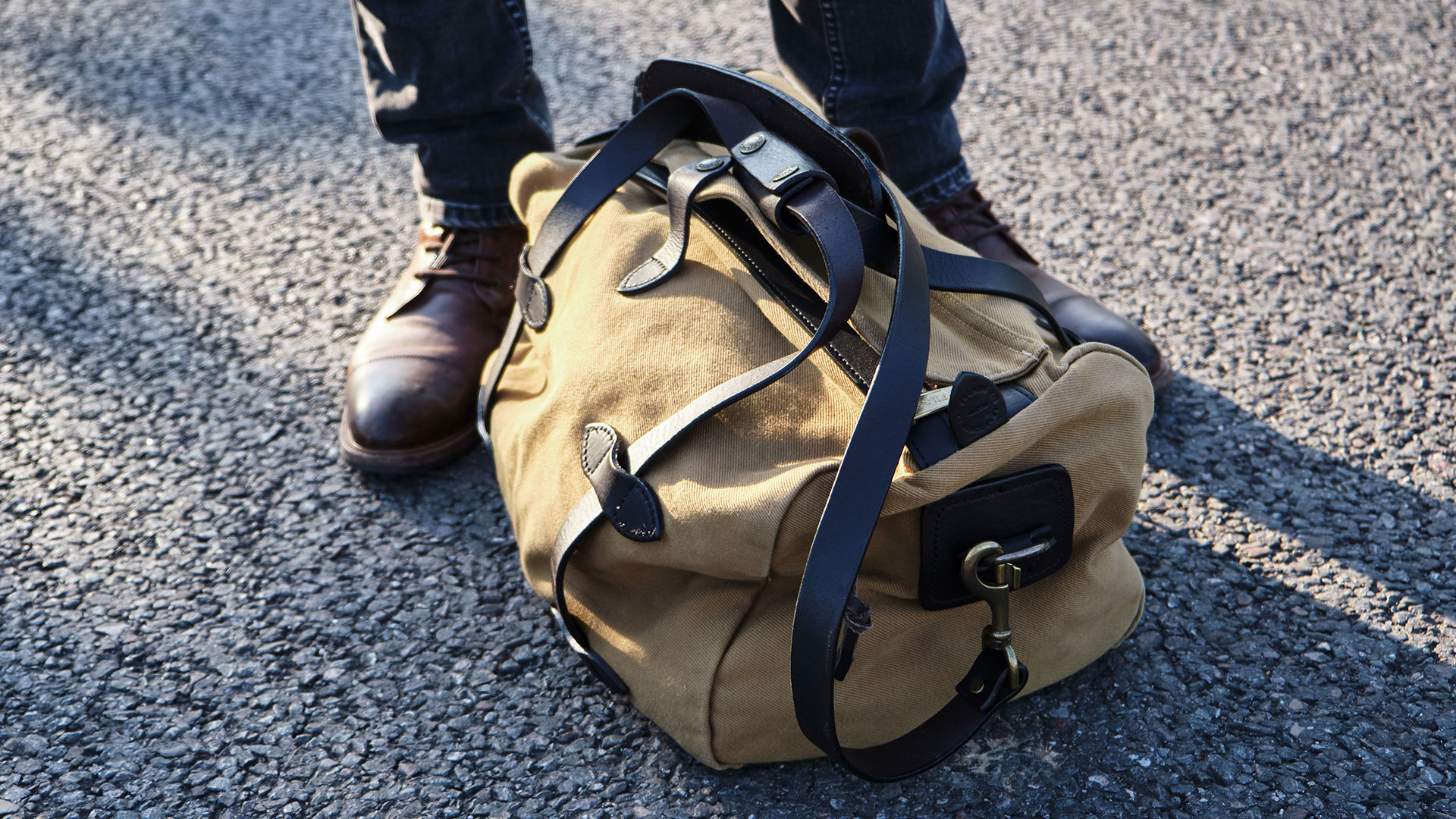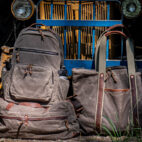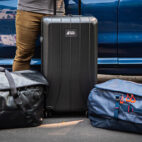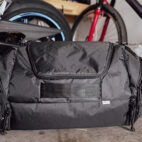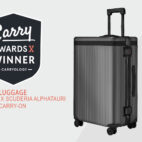Filson Small Rugged Twill Duffle Bag Review
It’s the winter of 1897 in the remote Yukon wilderness. Droves of prospectors brave treacherous mountain trails, icy glaciers, and dense forests for the promise of striking gold. Many of these pioneers will have geared up for the Yukon Gold Rush en route, at Seattle’s newly established outfitter. An outfitter named C.C. Filson.
Few clothing and gear brands can claim such a respected heritage. Almost 130 years on from their storied beginnings, does Filson’s Small Rugged Twill Duffel retain some of the ethos that has made the brand so successful? Read on to find out.
But first, a disclaimer: I can’t claim to have ventured into the northern Canadian wilds with my own Filson duffel. However, in the year I’ve owned it, this bag has chalked up a few miles. It’s accompanied me on short-haul vacations, overnight stays, and gym visits. I’ve packed it to the gunnels, squeezed it into some tight spots, and slung it in and out of a fair few car trunks.
Now whilst this doesn’t compare to the rigors of 19th-century gold prospecting, my experiences with the bag have given me plenty to like, but also shown me a few things I’d change. Let’s get into the details and see how the Filson Small Rugged Twill Duffle performs.
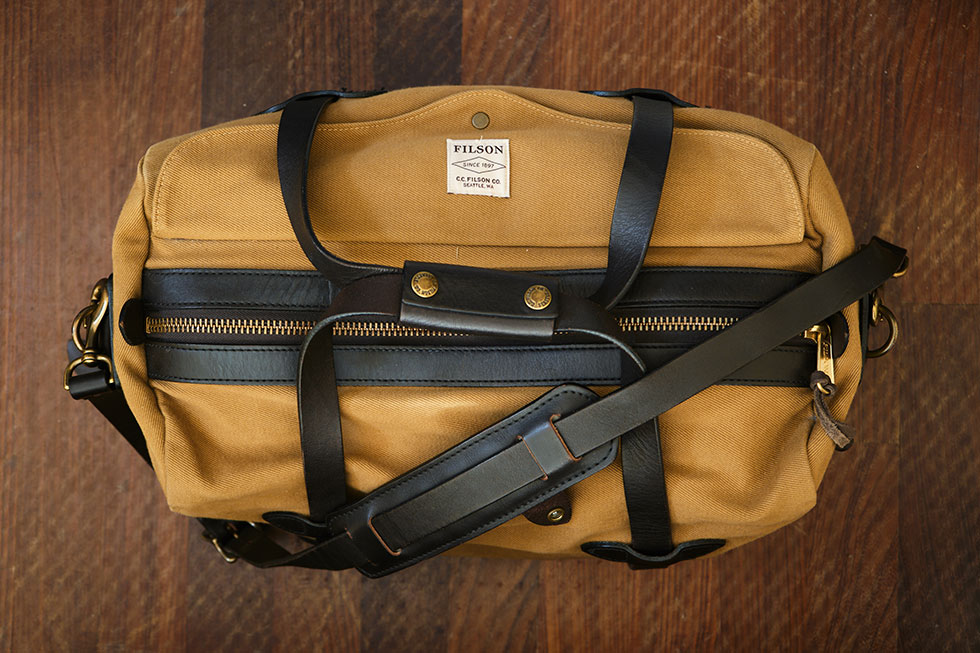
Who It Suits
If classic looks and exceptional build quality are up your street, this duffel is for you. Premium materials and a no-shortcuts approach to construction ensure this bag will go the distance, making it a great candidate for anyone looking to buy for life. Filson designed this holdall with compact proportions for carry-on luggage restrictions, making it an excellent cabin companion for frequent flyers. If you like the design but want something bigger, Filson also makes this duffel in Medium and Large sizes.
Who It Doesn’t
The Filson Small Rugged Twill Duffle isn’t trying to break new ground, so those looking for the latest textile advancements or hoping to save weight may want to avoid this unapologetically over-built and low-tech offering. In addition, if you’re after numerous pockets or other organization features, you may want to look elsewhere. Lastly, at $495, this bag won’t work for everyone’s budget.
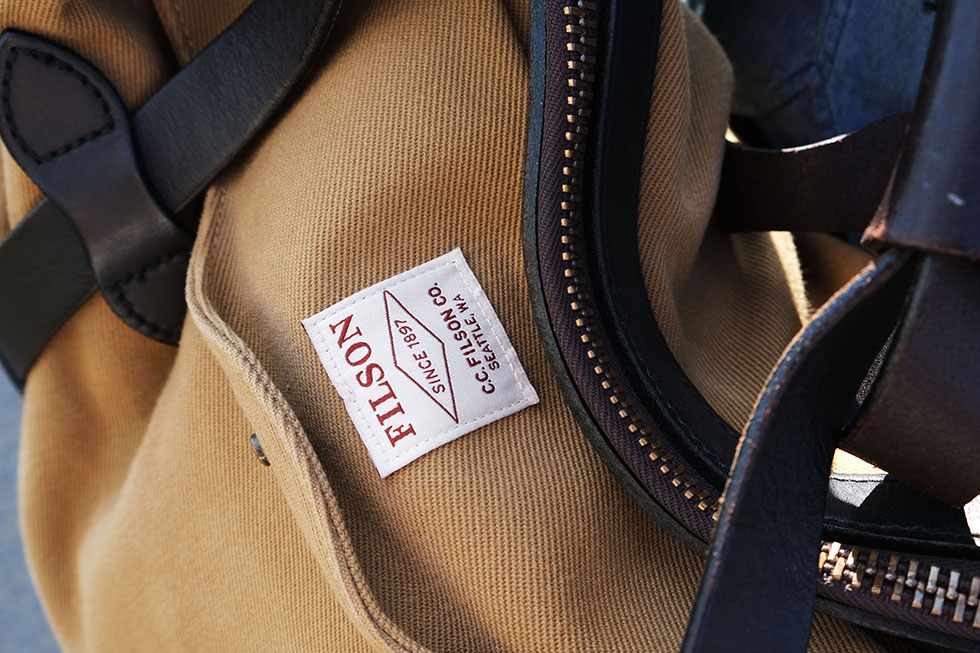
Specifications
· Name: Small Rugged Twill Duffle Bag
· Brand: Filson
· Format: Duffel bag
· Height x Width x Length: 10″ H x 11″ W x 18″ L
· Capacity: 33 liters
· Weight: 2 lbs 9 oz
· Hardware / Materials: Brass, canvas, and leather
· Price: $495
The Good
At 33L, the Filson Small Rugged Twill Duffle feels like the Goldilocks size for this type of bag. Its compact proportions make it an ideal candidate for short trips, weekend stop-overs, or visits to the gym – all without feeling cumbersome or unnecessary.
And yet, despite its name, Filson’s smallest duffel regularly surprises me with just how roomy it is. Thanks to its carry-on proportions, I’ve used it as my only bag for five to six-day vacations. Each time, I’ve comfortably hauled enough clothing and belongings to see me through, with space left over for an extra pair of shoes.
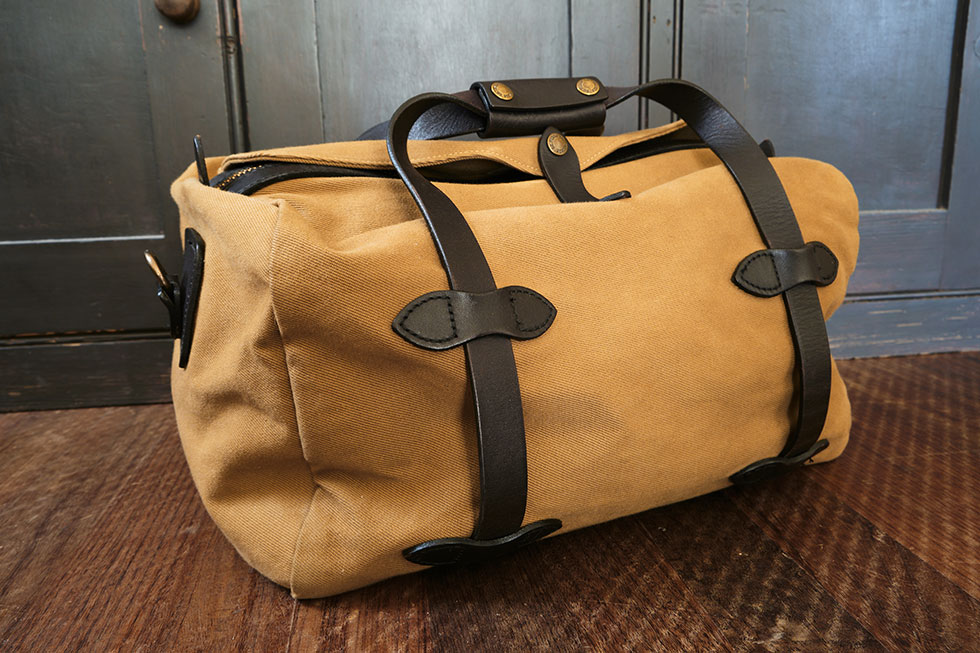
Heritage Styling
When it comes to duffel bags, it doesn’t get much more refined than this. The Filson Small Rugged Twill Duffle’s sumptuous combination of canvas, leather, and brass makes for one handsome holdall. I opted for the Tan canvas, but it was a hard pass on the Otter Green version. I’ve found the tan duffel looks great whether it’s accompanying you to the office or on vacation.
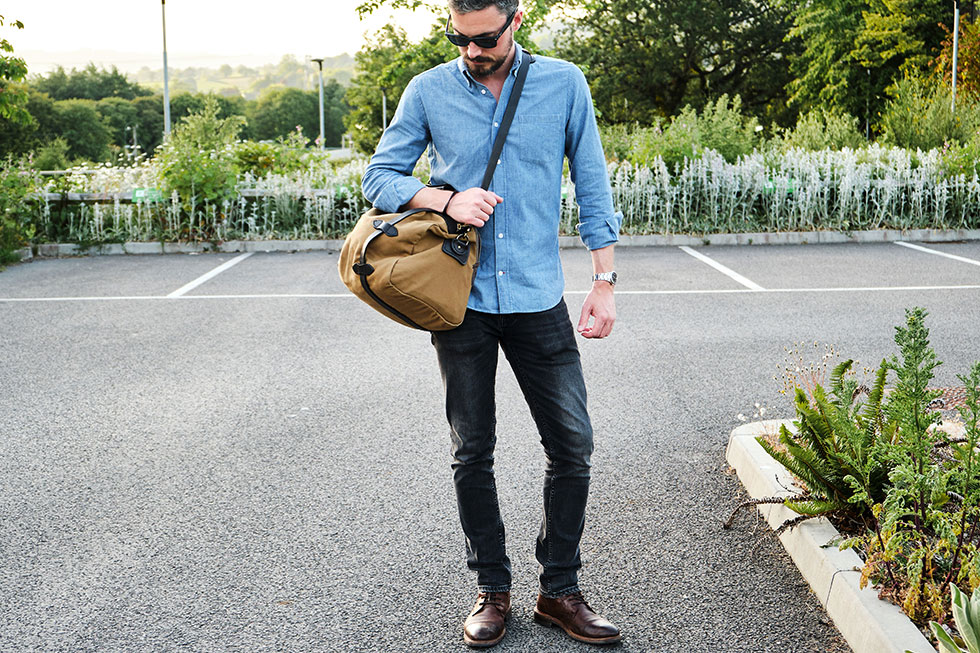
Aesthetics are of course subjective, but in my opinion, it’s the duffel’s rugged construction that makes it such a looker. The bag’s minimalist form is firmly led by its functional design, with styling a by-product of the workmanship behind it. There are no frills or unnecessary decorations, just a very well-made bag.
Built for the Long Haul
Even by Filson’s standards, the materials used for their duffel bags are hardwearing.
A durable cotton twill allows the canvas to shrug off scuffs that would normally leave a mark on other bags I’ve owned. Despite mine being bumped against the gritty walls of stucco holiday lets, I’m yet to find any noticeable signs of wear. Filson also waxes the canvas to fend off light showers, and this helps to prevent the bag from picking up stains.
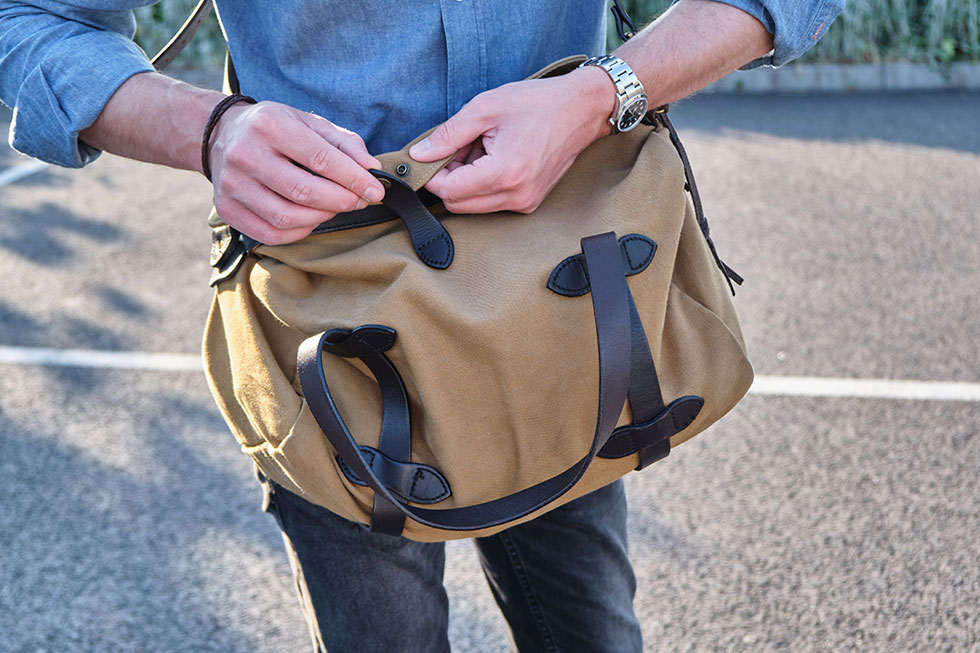
If the twill canvas is the bag’s body, then the leatherwork is the chassis. Thick bridle leather is found in all hardwearing areas, such as handles, straps, and either side of the brass zipper. Vegetable-tanned for months in a combination of oils, this horse-tack leather is practically impossible to dry out – keeping it strong and supple for years down the line.
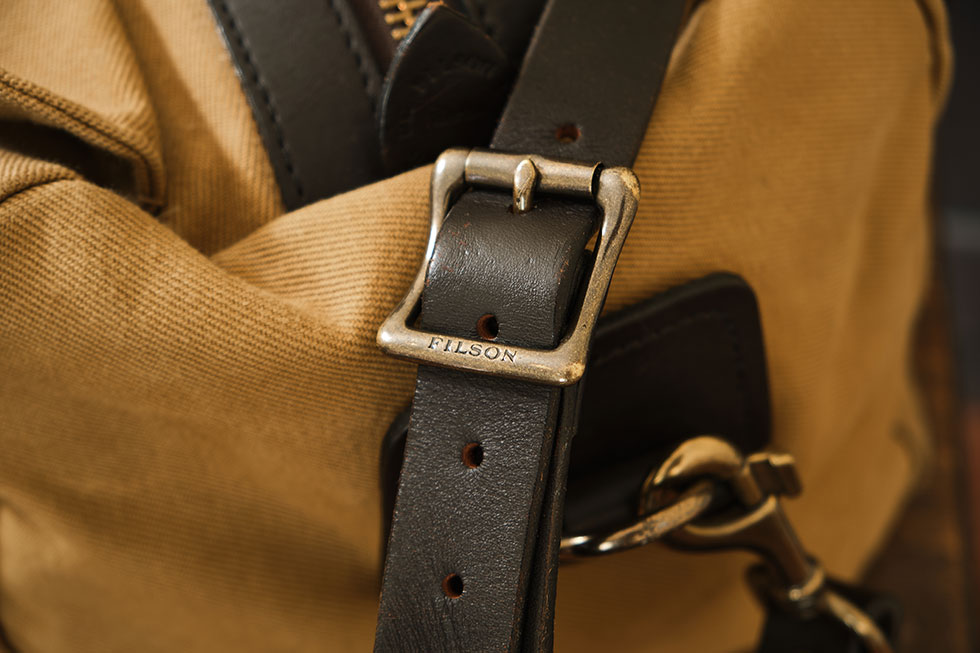
In addition to its tasteful looks, the duffel’s leatherwork is a key part of the bag’s function. Each carry handle is a single long strip of leather that encompasses the bag, forming a sling that supports the load from beneath. A 10cm track of stitching fixes the ends of each handle to the underside of the bag, with four leather keepers to hold them snugly in place.
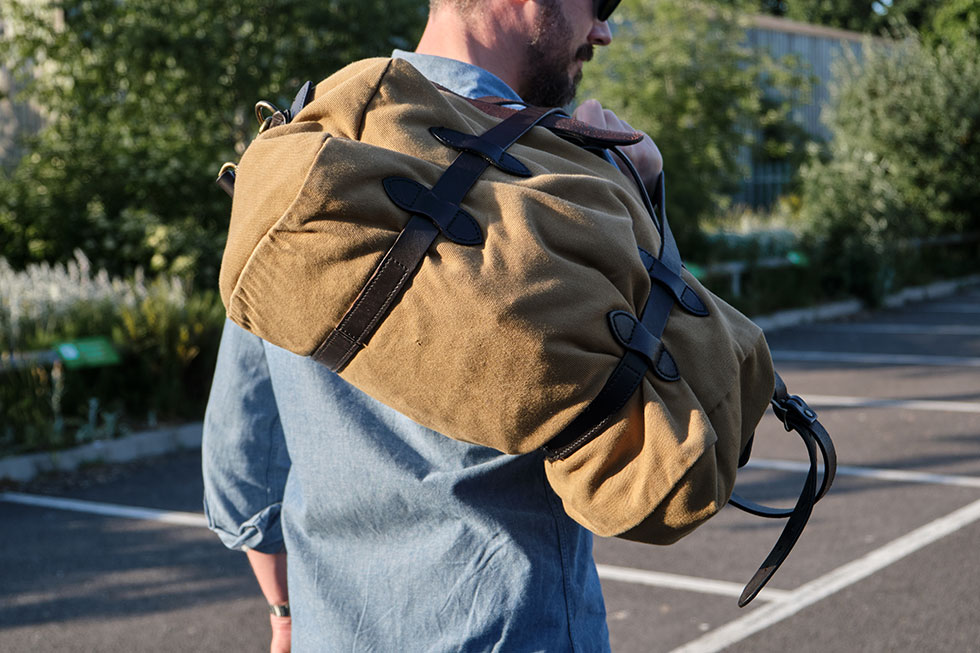
With the leather handles taking the strain rather than the canvas, the bag keeps its shape even with heavy loads. This feature also helps to keep the contents centered, preventing whatever you’re carrying from sloshing around when the bag isn’t fully loaded. While the duffel’s sling construction certainly isn’t unique, it’s a tried-and-tested design that not only strengthens the bag but also makes hauling your gear that little bit easier.
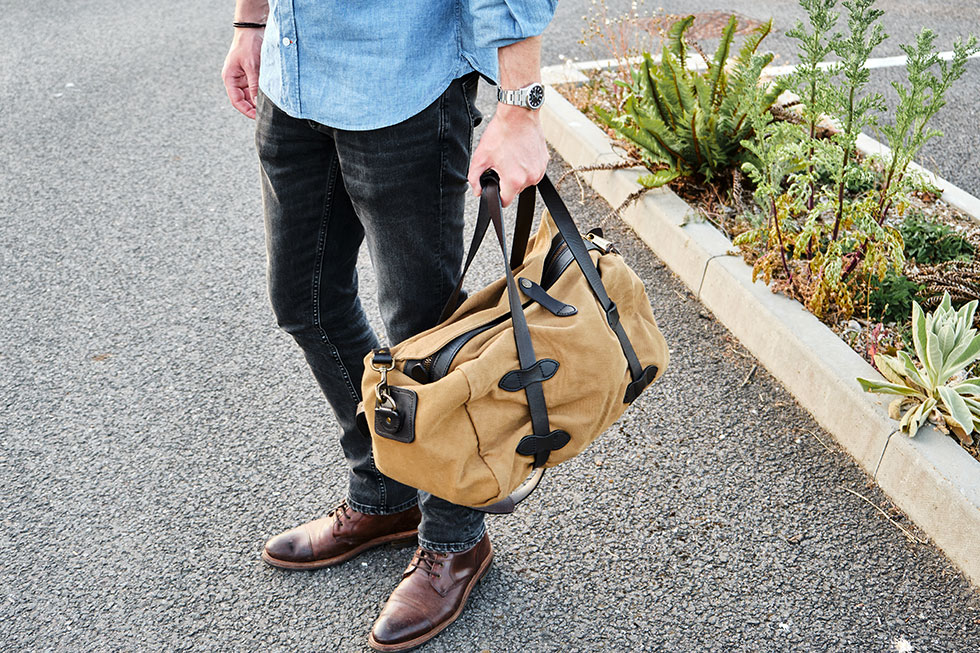
For shoulder carry, the Filson duffel has a detachable leather strap with a belt-style brass roller buckle to adjust the length. Despite its leather covering, the moveable shoulder pad is surprisingly soft, and I found it comfortable to use for everything but the heaviest loads.

While the strap doesn’t offer quite the same load balancing afforded by the carry handles, it’s no less durable. In keeping with Filson’s ‘belt & braces’ ethos, the strap mountings are anchored at either end of the bag with half leather-bound brass D rings, stitched and riveted onto thick leather patches.
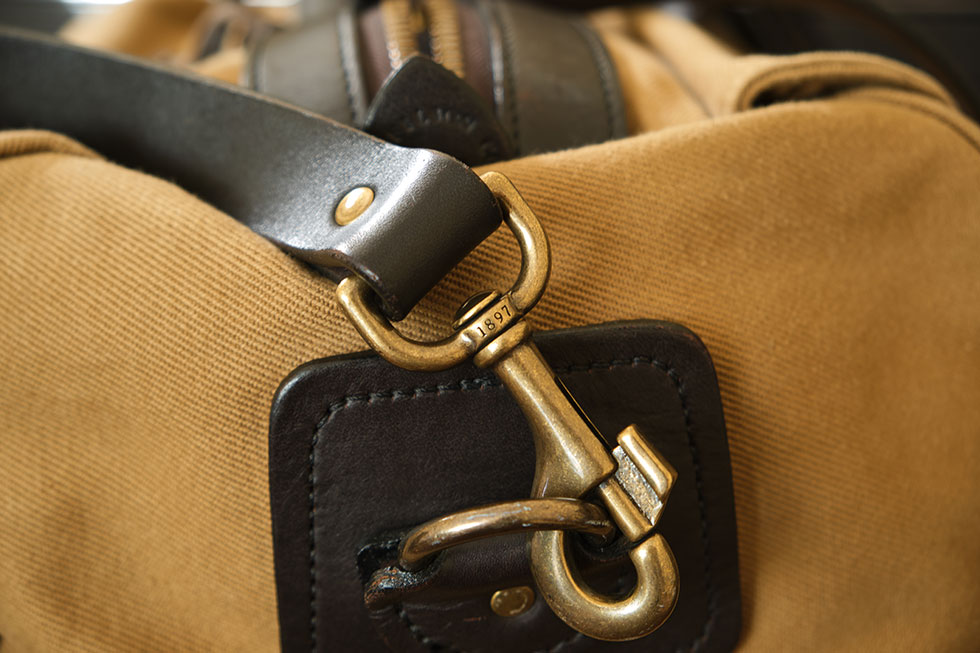
Naturally, the bag’s hardware does not disappoint. Solid brass is used throughout, accenting the muted palette. Buckles, snap hooks, and even the zipper have a reassuring weight and feel, in keeping with the other materials and setting the Filson duffel apart from the competition.
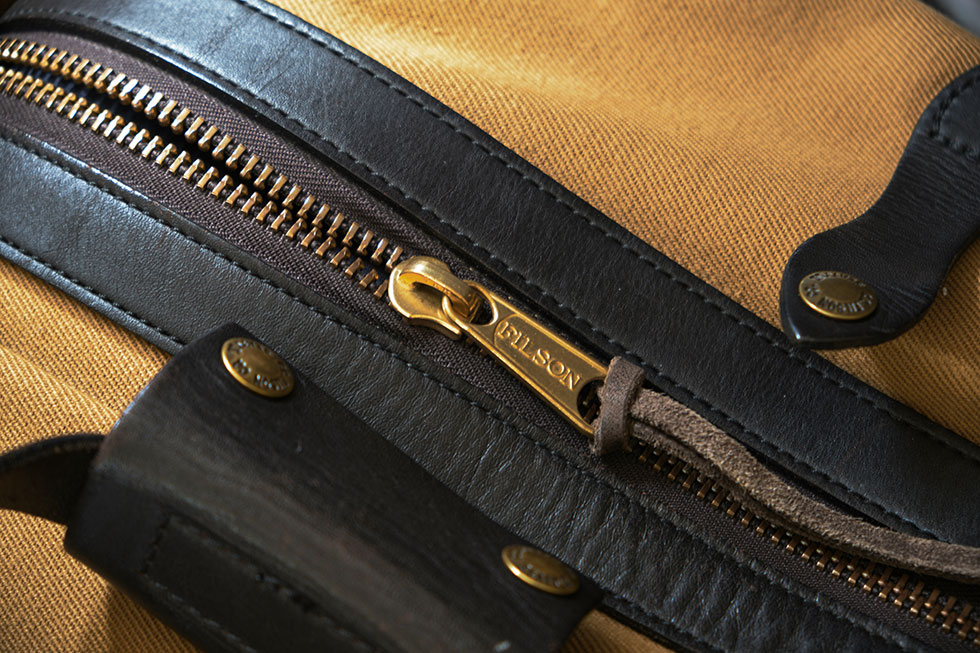
The Not So Good
Over the months I’ve used the Filson Small Rugged Twill Duffle, I didn’t encounter anything that could be considered a deal-breaker. However, if I had the opportunity, I’d probably change a few things.
A minor gripe for me was the bag’s sparse organization options. Although there are internal pockets at either end of the main compartment, they could do with being a little deeper as well as having some dividers. When the bag was half-full or less, I found these pockets tended to collapse, sometimes causing the contents to loll into the main compartment. A simple sewn divider could provide a bit more structure here, and help keep EDC gear and other bits organized after you’ve unpacked.
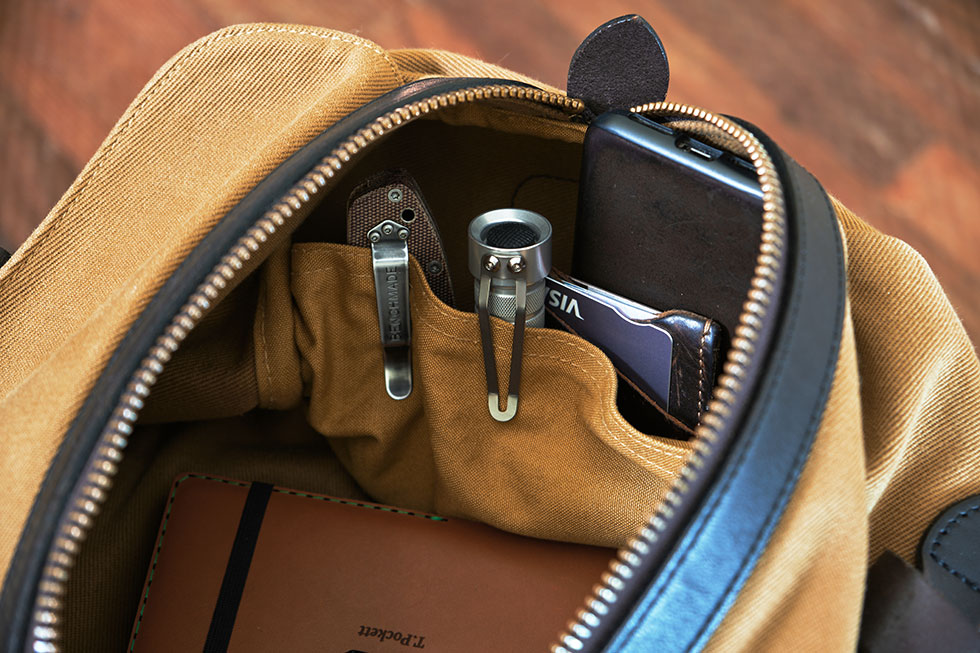
Continuing the theme of organization, another feature I’d like to see would be an externally accessible pocket. When traveling through airports, I found it easier to keep my passport on my person rather than having to unzip the duffel and reach into the main compartment each time. While this would probably impact the bag’s minimalist aesthetic, it would certainly benefit frequent flyers.
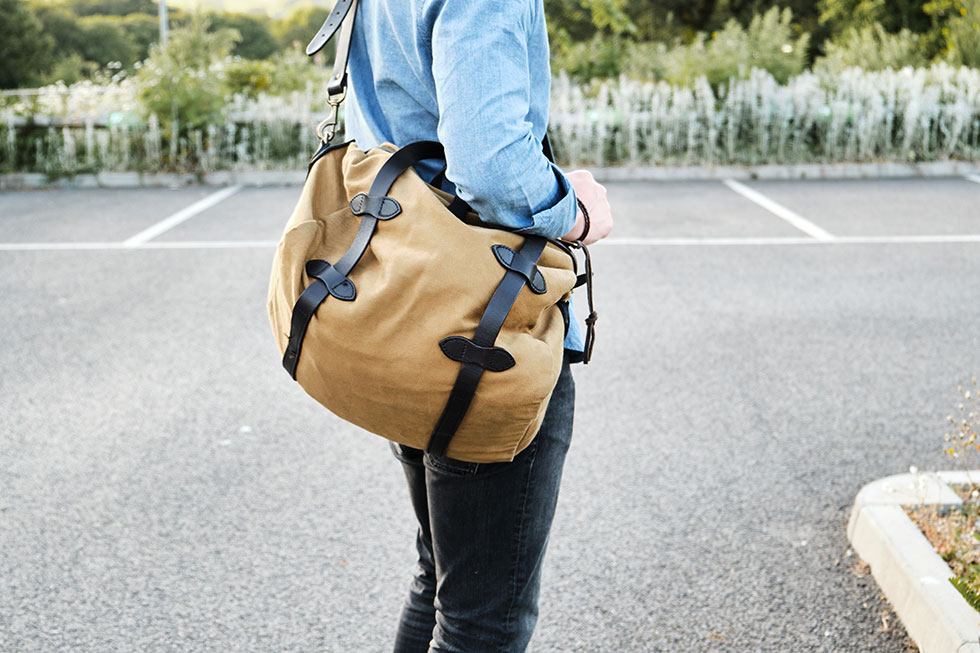
Something else to consider when weighing up this duffel is its water resistance. The bag has a storm flap that fastens over the zipper to keep the rain out, but while the canvas is lightly waxed, it doesn’t offer the same waterproofing as more heavily waxed options or those made with modern materials.
I found my example shed rain well initially, but damp patches were soon visible on the sides of the main compartment. Getting caught in the rain is a rare occurrence for me, so this isn’t something I’m worried about. But if you need your duffel to regularly withstand downpours, you may want to consider Filson’s oil finish Tin Cloth bags.
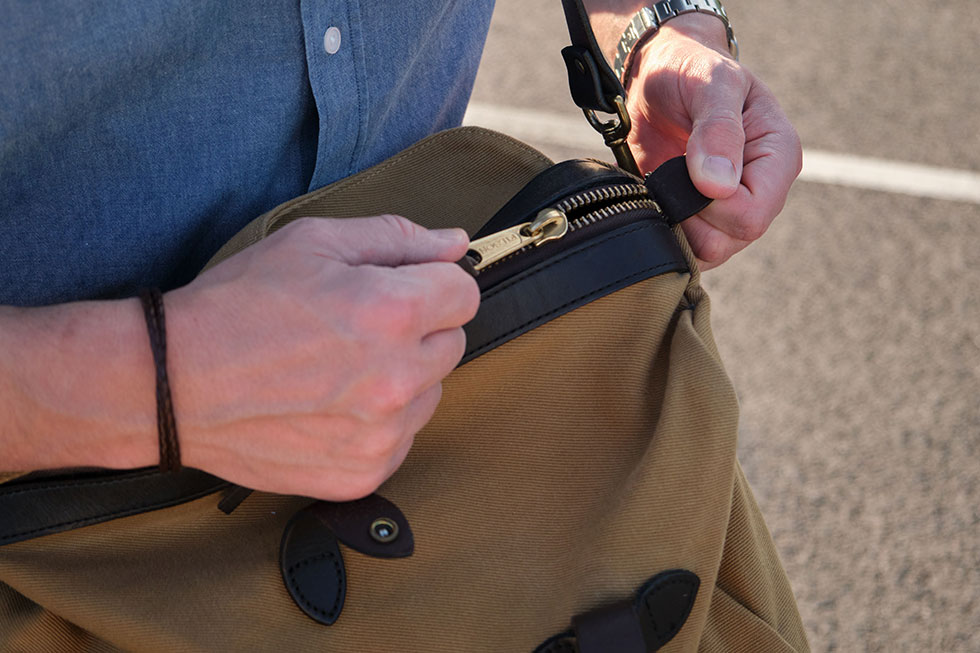
Verdict
After a year of using the Filson Small Rugged Twill Duffle, I have no regrets about picking it up. I was in the market for a good-looking duffel bag I could buy nice not twice, and I’m pretty confident I’ve found it. Although the $495 price tag is north of most duffel bags, I don’t expect I’ll ever need to replace it, and to me, that feels like good value.
In the small amount of time I’ve owned the bag, the only noticeable changes have been the way the canvas and leather have softened and broken in. It already feels more like ‘mine’ than the synthetic bags I’ve owned for years.
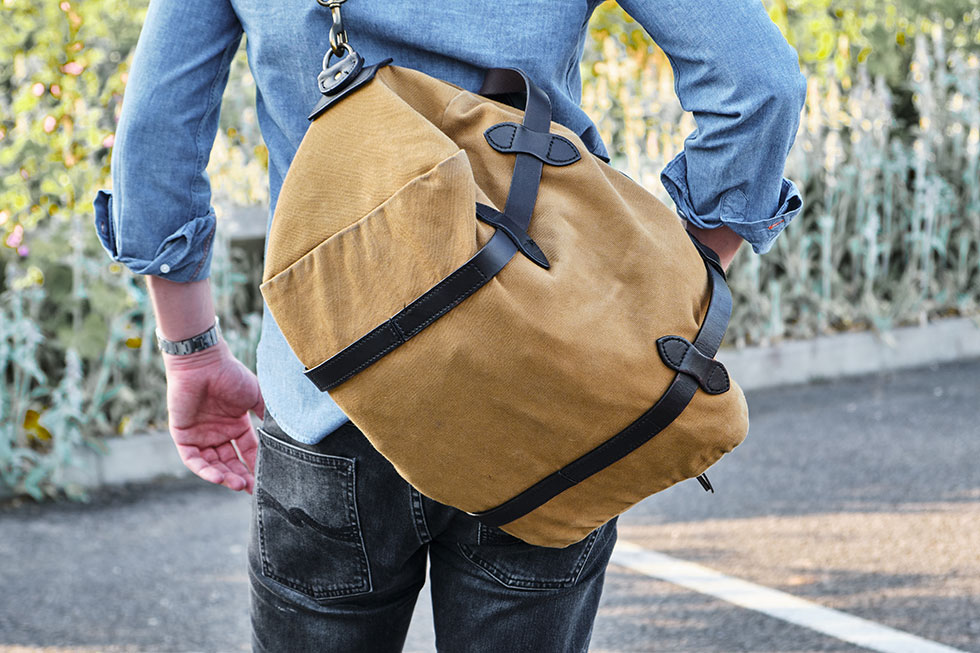
While I’d like to see Filson add a few more organization features, in reality, it’s not a deal-breaker for me. I already rely on packing cubes and EDC pouches to organize my bags, and I like the flexibility of being able to choose these options depending on what I’m carrying.
The Filson duffel’s refreshingly simple design makes it a versatile carry choice for any task that involves hauling gear from A to B. There are no frills. It’s austere in its layout and pure in its purpose. And like the hardwearing materials it’s made with, the bag’s simplicity guarantees it’ll always be useful – which is a plus given it’ll probably outlast me.
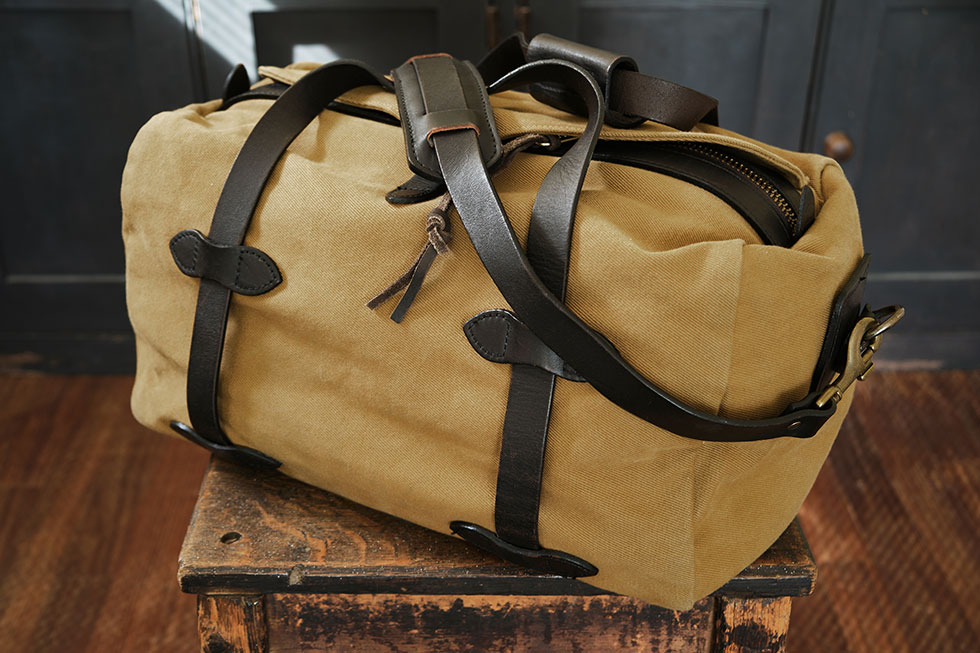
Filson’s duffel range has been in their catalog for over three decades, and the internet is littered with vintage examples still going strong, albeit with a few makeshift repairs and plenty of character. The fact the bag is relatively unchanged since its debut over three decades ago is a testament to the longevity of the design. Filson’s approach seems to be, ‘If it ain’t broke, make sure it’ll never need fixing.’
Would the Filson Small Rugged Twill Duffle survive the rigors of the 1897 Yukon Gold Rush?
Very likely.
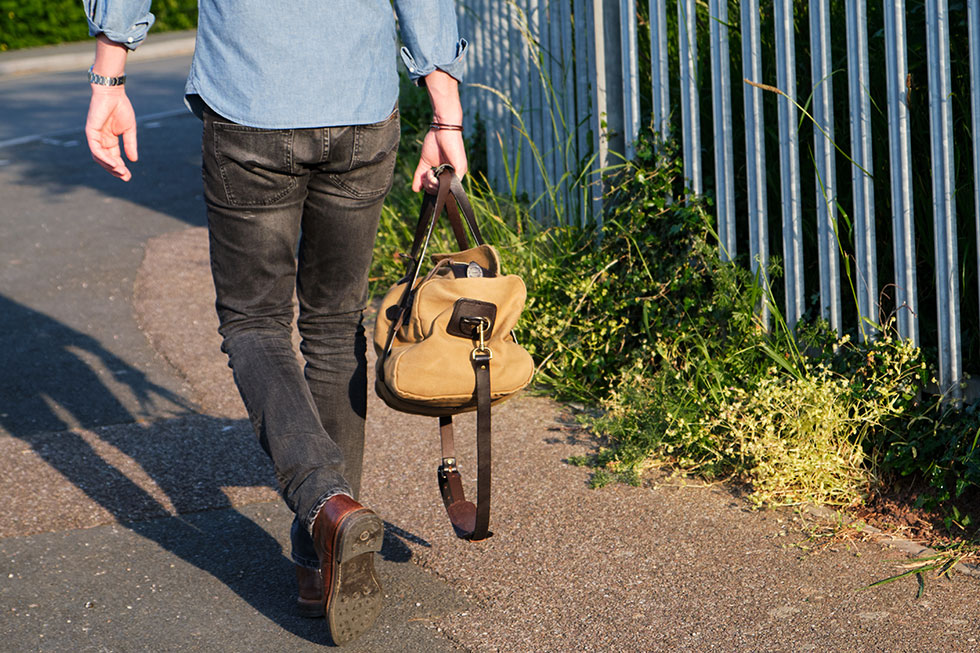
This article was written by Tim Pockett, an appreciator of well-designed bags, EDC, stationery, and other gear. Tim’s also a keen outdoorsman who never misses an opportunity to bag a peak. When he’s not hiking, writing about gear, or being a dad, he specializes in content marketing.





 Carry Awards
Carry Awards Insights
Insights Liking
Liking Projects
Projects Interviews
Interviews
